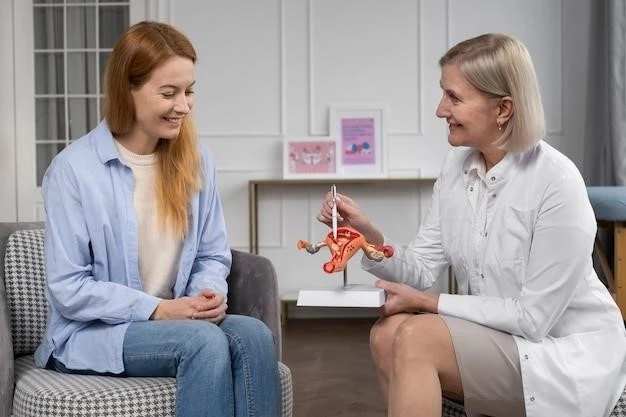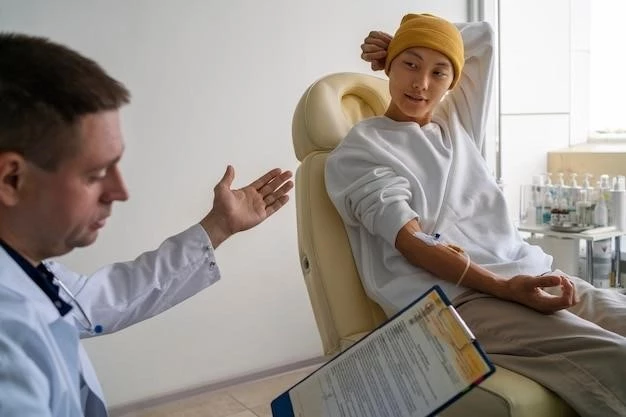Disease ─ Epiphysealis Hemimelica Dysplasia
Epiphysealis Hemimelica Dysplasia, also known as Trevor disease, is a rare skeletal disorder characterized by abnormal bone growth and cartilage formation near joints; It is caused by a benign tumor-like growth on the growth plate due to genetic mutations․ Treatment usually involves surgery, and the prognosis varies depending on the severity of the deformity․
Overview of Epiphysealis Hemimelica Dysplasia
Epiphysealis Hemimelica Dysplasia, also known as Trevor disease, is a rare skeletal disorder that typically affects children and adolescents․ It is characterized by abnormal bone growth and cartilage within the joints, most commonly in the ankle and knee joints․
The exact cause of Epiphysealis Hemimelica Dysplasia is not fully understood, but it is believed to result from a benign tumor-like growth on the growth plate․ This growth disrupts normal bone development and leads to skeletal deformities․
Individuals with this disorder may experience pain, swelling, limited joint movement, and visible deformities․ Diagnosis is usually made through imaging studies such as X-rays, MRI, or CT scans, which can reveal the characteristic abnormalities associated with the condition․
Epiphysealis Hemimelica Dysplasia is considered a rare condition, with only a few hundred cases reported in the medical literature․ It is thought to be caused by genetic mutations that result in the abnormal growth of cartilage and bone near the joints․
Due to its rarity and varied presentation, treatment approaches for Epiphysealis Hemimelica Dysplasia can vary․ Surgical intervention is often necessary to address the skeletal deformities and alleviate symptoms․ The prognosis for individuals with this disorder depends on the extent of the abnormalities and the success of treatment․
Understanding Bone Growth and Joints
To comprehend Epiphysealis Hemimelica Dysplasia, one must grasp the normal processes of bone growth and joint development․ Bone growth occurs predominantly at the growth plates, regions of cartilage at the ends of long bones․ During growth, new bone is formed on the epiphyseal side of the growth plate, pushing the bone away from the joint․
Joints are crucial structures that enable movement and provide stability in the skeletal system․ They consist of bones, cartilage, ligaments, and synovial fluid․ Cartilage acts as a cushion between bones and facilitates smooth joint motion․ Ligaments connect bones and provide joint stability, while synovial fluid lubricates the joint surfaces․
In Epiphysealis Hemimelica Dysplasia, the normal processes of bone growth and joint formation are disrupted due to the formation of abnormal cartilage growths near the joints․ This disrupts the normal bone development and can lead to skeletal deformities, pain, and functional limitations․
Understanding the intricate interplay between bone growth and joint function is essential in comprehending the pathophysiology of conditions like Epiphysealis Hemimelica Dysplasia․ By recognizing the importance of these processes, healthcare professionals can better diagnose, treat, and manage skeletal disorders affecting bone growth and joint integrity․
Epiphysealis Hemimelica Dysplasia and Skeletal Deformity
Epiphysealis Hemimelica Dysplasia is closely linked to skeletal deformities due to the abnormal growth of bone and cartilage near the joints․ This condition can lead to asymmetrical growth patterns, affecting the shape and structure of the bones involved․
Skeletal deformities in Epiphysealis Hemimelica Dysplasia commonly manifest as irregular bone overgrowth, joint misalignment, and functional limitations․ The deformities may cause pain, stiffness, and difficulties with mobility, impacting the affected individual’s quality of life․
The severity of skeletal deformities in Epiphysealis Hemimelica Dysplasia varies depending on the location and extent of the abnormal bone growth․ Deformities may be more pronounced in weight-bearing joints such as the knees and ankles, where the abnormal growth can interfere with joint movement and stability․
Managing skeletal deformities in individuals with Epiphysealis Hemimelica Dysplasia often requires a multi-disciplinary approach involving orthopedic surgeons, physical therapists, and other healthcare professionals․ Treatment strategies focus on addressing the underlying bone and cartilage abnormalities to improve joint function and alleviate symptoms․
By understanding the relationship between Epiphysealis Hemimelica Dysplasia and skeletal deformities, healthcare providers can tailor treatment plans to address the specific needs of each individual affected by this rare condition, ultimately aiming to optimize function and enhance overall quality of life․
Growth Plate Abnormality in Epiphysealis Hemimelica Dysplasia
Epiphysealis Hemimelica Dysplasia is characterized by a distinctive growth plate abnormality that contributes to the development of skeletal deformities․ The growth plate, also known as the epiphyseal plate, plays a critical role in bone growth and development during childhood and adolescence․
In individuals with this rare disorder, the growth plate is affected by the formation of abnormal cartilage growths, disrupting the normal process of bone formation․ These growths can lead to irregular bone growth patterns, resulting in asymmetrical bone development near the affected joints․
The growth plate abnormality in Epiphysealis Hemimelica Dysplasia can cause a range of symptoms, including pain, joint stiffness, and functional limitations․ As the abnormal cartilage growths interfere with normal bone growth, they can also lead to joint misalignment and instability․
Imaging studies such as X-rays and MRIs are essential for diagnosing growth plate abnormalities in individuals suspected of having Epiphysealis Hemimelica Dysplasia․ These imaging techniques help visualize the characteristic changes in bone and cartilage near the affected joints․
Understanding the impact of growth plate abnormalities in Epiphysealis Hemimelica Dysplasia is crucial for healthcare professionals involved in the diagnosis and management of this condition․ By targeting the underlying growth plate issues, treatment strategies can be tailored to address the specific needs of individuals affected by this rare skeletal disorder․
Tumor Formation in Epiphysealis Hemimelica Dysplasia
In Epiphysealis Hemimelica Dysplasia, tumor formation occurs as a distinctive feature of this rare skeletal disorder․ The tumors associated with this condition are considered benign in nature, resembling abnormal growths of cartilage on the growth plate near the joints․
These tumor-like growths disrupt normal bone growth and development, leading to skeletal deformities and functional impairments․ Despite being classified as benign, the tumors in Epiphysealis Hemimelica Dysplasia can cause pain, swelling, and joint stiffness due to their impact on joint integrity and movement․
The tumor formation in this disorder is linked to genetic mutations that drive the abnormal growth of cartilage near the affected joints․ These mutations alter the normal processes of bone development, resulting in the formation of tumors on the growth plate, which can lead to irregular bone overgrowth and joint abnormalities․
Diagnosing tumor formation in Epiphysealis Hemimelica Dysplasia typically involves imaging studies such as X-rays, CT scans, and MRIs, which can provide detailed insights into the location, size, and characteristics of the tumors․ This information is crucial for determining the extent of skeletal involvement and planning appropriate treatment approaches․
Recognizing the role of tumor formation in Epiphysealis Hemimelica Dysplasia is essential for healthcare professionals involved in the care of individuals with this condition․ By understanding the nature of these benign growths and their impact on skeletal health, tailored treatment strategies can be implemented to address the specific challenges posed by tumor formation in this rare disorder․

Treatment Approaches for Epiphysealis Hemimelica Dysplasia
Managing Epiphysealis Hemimelica Dysplasia requires a comprehensive approach that addresses the skeletal deformities and functional impairments caused by this rare disorder․ Treatment strategies often involve a combination of surgical interventions and supportive therapies aimed at improving joint function and quality of life․
Surgery plays a significant role in the treatment of Epiphysealis Hemimelica Dysplasia, particularly in cases where skeletal deformities are severe or causing significant symptoms․ Surgical procedures may include resection of the abnormal cartilage growths, realignment of affected bones, or stabilization of joints to restore function․
In complex cases, where the abnormal bone growth significantly impacts joint structure and function, joint replacement surgery may be considered to alleviate pain and improve mobility․ These surgical interventions are tailored to the individual’s specific needs and guided by the extent of skeletal involvement․
Post-operative rehabilitation and physical therapy are essential components of treatment for Epiphysealis Hemimelica Dysplasia․ These therapies aim to optimize joint mobility, strengthen muscles, and improve overall function following surgical intervention․ They play a crucial role in maximizing the outcomes of surgical procedures and promoting long-term joint health․
Regular monitoring and follow-up care are important aspects of managing Epiphysealis Hemimelica Dysplasia to assess treatment effectiveness and address any potential complications that may arise․ Healthcare providers work closely with individuals affected by this disorder to tailor treatment plans to their evolving needs and optimize long-term outcomes․
By employing a multi-disciplinary approach that combines surgical expertise, rehabilitation, and ongoing support, healthcare teams can provide comprehensive care for individuals with Epiphysealis Hemimelica Dysplasia, ultimately striving to enhance quality of life and functional independence․
Conclusion
In conclusion, Epiphysealis Hemimelica Dysplasia, or Trevor disease, is a rare skeletal disorder characterized by abnormal bone growth and cartilage formation near joints, typically affecting children and adolescents․ The development of benign tumor-like growths on the growth plate due to genetic mutations leads to skeletal deformities and functional impairments․
Diagnosis of Epiphysealis Hemimelica Dysplasia relies on imaging studies and clinical evaluation to identify the characteristic abnormalities associated with the condition․ Treatment approaches often involve surgical interventions to address skeletal deformities, realign affected bones, and restore joint function․
Post-operative rehabilitation and physical therapy play a crucial role in optimizing outcomes and promoting long-term joint health․ Regular monitoring and follow-up care are essential to assess treatment effectiveness and manage potential complications effectively․
By understanding the complex nature of Epiphysealis Hemimelica Dysplasia and utilizing a multi-disciplinary approach that integrates surgical expertise, rehabilitation, and ongoing support, healthcare providers can offer tailored treatment plans to enhance the quality of life and functional independence of individuals affected by this rare skeletal disorder․
Continued research and advancements in medical interventions aim to further improve the management of Epiphysealis Hemimelica Dysplasia, offering hope for individuals living with this challenging condition․ With a collaborative and patient-centered approach, healthcare teams can make significant strides in addressing the unique needs of individuals affected by Epiphysealis Hemimelica Dysplasia․
